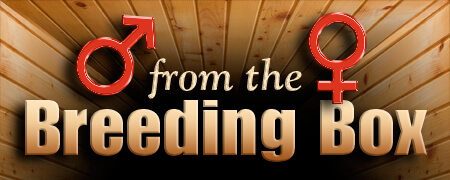A question has been submitted by a fellow beef producer in an effort to more fully understand the genetic potential resulting from the use of science based, objective information in a breeding program.
QUESTION: We recently were having a discussion about EPD birth weights with fellow beef producers in a different part of the country from where our operation is located. We explained our program uses a balanced approach in our genetic selection. We select for carcass quality but continue to apply selection pressure to birth weight. Our fellow beef producers disagreed and made a case for larger framed cows and higher birth weight calves because they "sell their cattle by the pound." Can you help me better understand the value of lighter birth weight calves?
ANSWER: Excellent question! Let's clarify one thing at the beginning. No doubt about it, all commercial cattle sell by the pound! Our focus at Gardiner Angus Ranch for the past 60 years has been to DEFINE the QUALITY of those pounds. After all, would you rather have a pound of lead or a pound of gold? In today's market, would you rather market a pound of USDA Select beef or a pound of USDA Prime or Choice beef? The week of November 18, 2011, the Choice/Select spread closed at $18.92/cwt. You do the math!
It is an incorrect assumption that lighter birth weight cattle resulting from balanced selection criteria do not possess the genetic ability to grow and produce high quality beef. The calving ease (CE) bulls we use also rank in the top 7% of the Angus breed for Yearling Growth. Cattle with lighter birth weights but inferior growth simply have not been selected to perform any better. The key element is the use of proven, high accuracy sires with the genetic potential to pass on lower birth weights AND high growth with superior carcass quality. Conversely, cattle selected ONLY for lighter birth weight will consistently post sub par performance up the food chain.
It is important not to confuse fat with muscle. Pastures all across America are filled with larger framed, fat cows with no chance whatsoever to pass carcass quality on to their offspring because there was no selection pressure placed on muscle or carcass quality. The average bull sold in 2011 at Gardiner Angus Ranch sales is .70 for RE, the top 3% of the Angus breed.
The only true measure of muscle and the quality of that muscle is carcass data collection. We see feedyard and closeout reports from thousands of our customers' cattle, plus our own retained ownership cattle. The average of the 6,000 head, sired by GAR bulls, and sold on U.S. Premium Beef grids in 2011 received a $92 per head premium. In fact, GAR customers using our delivery rights and selling cattle on the USPB grids have received more than $3.6 million in premiums—every head sold by the pound!
In general, if there is no selection pressure applied, any trait not specifically selected for will be average. If you want to design cattle that hit targets of merit (i.e. money), you must use database selection schemes using the best bulls of the Angus breed.
